Power Lines: Some of Canada’s most successful fashion families gain their power from within
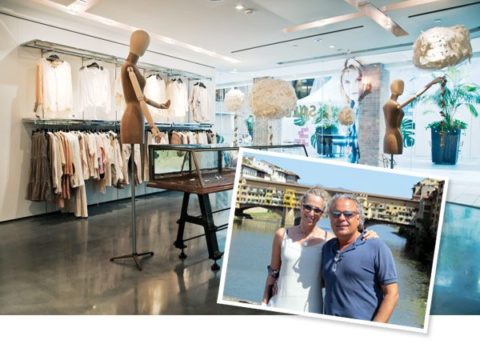
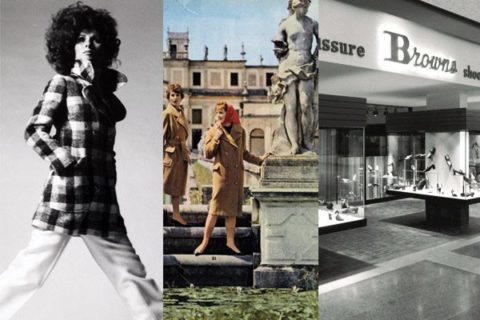
From footwear to outerwear, these engaging Canadian fashion ventures are keeping it in the family.
By Laura deCarufel
THE WEINBERGS | ALDO | CANADA GOOSE | BROWNS | DANIER | JACOB | LAURA CANADA | THE ASSARAFS | LA CANADIENNE
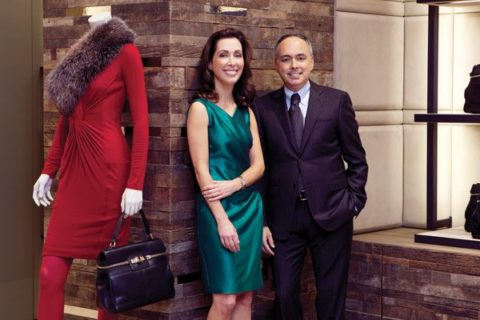
THE WEINBERGS
Siblings Deena and Barry Weinberg may be fourth-generation fashion retailers, but they’re not afraid to veer off the family path. Instead of following in the footsteps of their great-grandparents, grandmother, mother, uncle and aunt—who each opened multi-designer boutiques—they built a business on a single European brand. In 1986, they opened Max Mara’s first store in North America in their native Toronto.
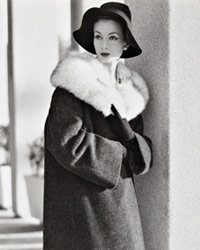
Deena first came across Max Mara when she went on a university trip to Italy. Her interest was both personal and professional: She thought her mother, Joy Cherry, should carry the luxe brand in her eponymous Toronto boutique. Soon after, Deena moved to Florence, where she studied Italian and worked in the Max Mara store. Today, she is the director of retail for Toronto’s Marina Rinaldi store and Max Mara flagship, while Barry is the general manager of operations for both brands in Canada.
The duo share an enviable fashion ancestry. They spring from the Cherry family tree, which traces its retail roots back to 1906, when Deena and Barry’s great-grandparents Isadore and Celia Cherry opened a womenswear store named Madam Cherry. In 1935, their daughter Esther Cherry opened the Irene Shop (named for her sister). Esther’s children Alan, Linda and Joy expanded the family business: Alan opened Alan Cherry in 1970, which stocked menswear. Linda Cherry, now a sculptor, opened a self-titled casualwear store in the early ’80s, while Joy’s boutique, the Joy Cherry Shop, became a first-rate fashion destination. “My mother is my mentor,” says Deena. “She paid endless attention to every detail of her business, as well as to her staff and family.”

ALDO
Douglas Bensadoun’s first shoe crush came from a surprising source. His family has been involved with footwear for generations—his great-grandfather was a cobbler, and his father, Aldo, founded the hugely successful namesake brand—but it was a pair of Air Jordan 5 shoes (purchased at 15) that made him say, “Damn, I think I’ve got the shoe bug.”
Before joining his father (“Mr. B”), CEO of Aldo Group, and brother David, vice-president of global retail, in the family business five years ago, Douglas explored his artistic impulses in film. “When you work with family, you don’t have the luxury of professional distance,” he says. “But we rarely need it. We have a deep, silent understanding and an instinct.”
That instinct has helped the brand grow from a single free-standing Montreal store in 1978 to an international retail heavyweight with more than 1,000 boutiques in 65 countries, including France, where the brand opened its first Paris store this fall. One of the company’s newest ventures is Locale, a series of stand-alone footwear and accessories concept stores, which offer modern classics as opposed to Aldo’s runway-ready pieces. As passionate as this family is about design and construction, Douglas believes it’s not the shoe alone that ultimately hooks customers. “It’s what the shoe represents. It allows you to dream.”

CANADA GOOSE
How do you turn Canada into a fashion statement? Dani Reiss, president and CEO of outerwear company Canada Goose, has a few ideas. “Europeans love Canada,” he says. “The Great White North, the aurora borealis, polar bears—it speaks to our romanticized position in the world. Buying a Canada Goose jacket is like buying a piece of Canadian mythology.”
Founded by his grandfather, Sam Tick, in 1957, this iconic company (then called Metro Sportswear) catered mostly to northerners who needed warm coats to protect against winter’s chill. A generation later, Tick’s son-in-law David Reiss (Dani’s father) took over, introducing the brand’s down-filled parkas and signature outdoorsy chic to stores such as Eddie Bauer and L.L. Bean. After graduating from university, Dani joined his father at the company in 1997 on a three-month contract, which he extended several times before committing for good. “I started to think of Canada Goose as something other than my dad’s job. I began to believe in it,” he says.

Today, the company has more than 700 employees in Canada, and its products are sold in more than 40 countries and at some of the world’s hippest boutiques (Colette in Paris, United Arrows in Japan). Dani says its expanded clientele hasn’t altered the brand’s core. Canada Goose still makes all of its pieces here at home using the latest technology to keep fans, such as Drake and Scarlett Johansson, cozy. “Canada is the essence of who we are. You can’t make a Swiss watch in China, right?”

BROWNS
Michael Brownstein, the president of footwear empire Browns, learned the power of the personal touch from his father, Morton, who opened the family’s first shoe store in Montreal in 1940. “My father was the first to bring designers like Charles Jourdan and Salvatore Ferragamo to Canada. He was friends with Roland Jourdan, Charles’s son.”
For his part, Michael counts modern shoe gurus such as Manolo Blahnik president George Malkemus and designer Stuart Weitzman as close friends. “Stuart and I are always collaborating,” he says. Their Joy Pump was particularly successful. It started as a Browns exclusive and went on to sell 300,000 pairs worldwide.
Morton may have fallen in love with shoes while helping out in his father’s business (a department store also called Browns), but it took a little longer for Michael. He worked in the Browns stores as a teen and then moved to Europe, where he became a professional skier. In 1973, he came home and got a job as a junior buyer for the family business. “At 23, you think you know everything. You soon realize that you don’t,” quips Michael, who oversees nearly 50 stores across Canada, with another five set to open next year. The best part of his day? Lunch with his son, David, VP of store operations, and his daughter, Julia, a senior buyer.

DANIER
Danier Leather turns 40 next year, but don’t expect Jeffrey Wortsman, Danier’s president and CEO, to dish about the brand’s anniversary plans. “It’s a surprise party,” he says. Who can blame him for keeping mum? Since his father, Irving Wortsman, co-founded Danier in 1972, the brand has become adept at defying expectations.
Headquartered in Toronto, the company (then called Leather Attic) started out as a manufacturer and wholesaler of upscale leather and suede apparel. Two years later, Irving opened the first two retail stores. Today, there are 92 stores across Canada, including a sleek new flagship at Square One Shopping Centre in Mississauga, Ont.
“I love the intellectual challenges of retail,” says Jeffrey, who took the reins from his father in 1998, the year the company went public. “It’s exciting every day.” Lately, much of that excitement has centred around the company’s high-fashion collaborations. This fall’s Designers for Danier series reads like a who’s who of buzzy industry names: There’s the knitted leather capsule collection created by London-based It boy Mark Fast; Skin, a six-piece line by Greta Constantine, which includes voluminous coats crafted from buttery soft, worn-in leather; and Object, designed by Toronto fashion editor and stylist George Antonopoulos, a sexy mix of leggings, fitted trenches and button-down shirts. Jeffrey is a strong believer in the power of such alliances. “We celebrate the great talent of the Canadian fashion industry, as well as deliver excitement and freshness to our customers.”
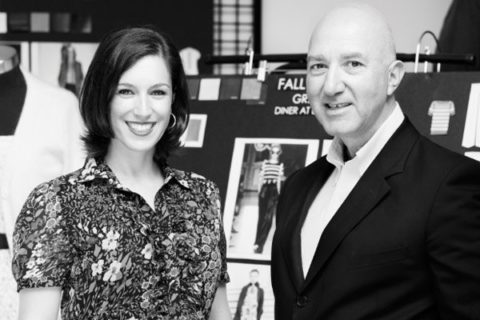
JACOB
Joey and Odette Basmaji have always dreamed big. In the ’70s, the couple took the bus to Montreal every Sunday to window-shop along Ste-Catherine Street and fantasize that their fledgling apparel company, Jacob, would find its place along this prominent strip. Within two years, the dream became a reality.
“Then they came up with a new dream,” says Cristelle Basmaji, the duo’s daughter and Jacob’s director of marketing and communications. “One Jacob store in every major Canadian city.” That goal was reached by the end of the ’80s.
The Basmaji family now oversees 100 stores across the country. The brand’s lingerie and casualwear support a core collection of what Cristelle calls classic fashion with a twist—like the empire-waist polka-dot frock sported by mega model (and former FASHION cover girl) Coco Rocha in its fall campaign.
This family’s success story is especially heady given their humble origins. During the ’60s, Jacob, a Syrian immigrant, opened a menswear store called Jacob, in Sorel, a small Quebec town. When he passed away in 1977, his son, Joey, took over. With the help of his two sisters—and his stylish girlfriend, Odette—he began transforming the business into a womenswear brand.
Committed as they are to career excellence, the Basmajis have always been adamant about separating business and pleasure. “When we’re at work, we’re at work,” says Cristelle. “But at family dinner on Sunday night, we never talk business.”

LAURA CANADA
Kalman Fisher’s fascination with fashion started at an early age. The retail wunderkind grew up in Montreal, working nights, weekends and summers at the Laura Canada store his grandmother Laura Wolstein opened in 1930. Kalman’s mother and father ran the shop, while he tagged clothes, worked the floor and attended vendor appointments.
That experience came in handy when Kalman, then 19, took over the company in 1973. The time was right for a major expansion, since more and more women were entering the workforce; the need for elegant officewear exploded. Laura Canada’s versatile, ladylike separates proved a perfect fit, and by the end of the ’70s, he had opened five new stores in Montreal.
Kalman’s wife, Melanie, inspired the brand’s next venture: Melanie Lyne (which launched in 1984), a series of stores offering higher-end, sophisticated styles. Now that the brand has grown to include 170 stores across the country—a retail portfolio consisting of Laura Canada, Laura Petites, Laura Plus, Laura Superstore and Melanie Lyne—he is turning his attention to the virtual world by relaunching the brands’ websites and introducing online shopping. The e-commerce world may be faceless, but Kalman is confident that he’ll find a way to showcase his family’s notable amiability. “The warmth of family flows into [our] relationships with associates and business partners,” he says. “Working with family has only been a positive experience.”
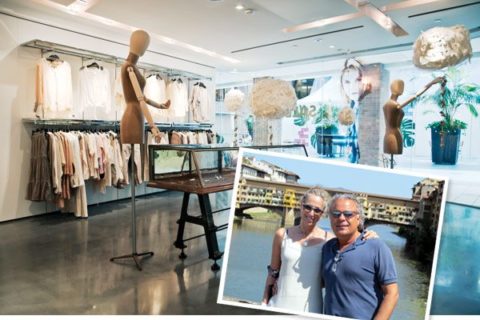
THE ASSARAFS
Known as arbiters of modern style, brothers Arie and Patrick Assaraf’s fashion story dates back to 1982, when Patrick, newly arrived to Toronto from Israel, started wholesaling menswear from his basement. Arie came to visit in 1988 and began working at a cousin’s Yonge Street womenswear store. In 1991, Arie and Carrie Richmond (then his girlfriend, now his wife) opened fashion emporium TNT. Carrie managed the boutique while Arie flew to Paris every six weeks to source hot new labels. (That same year, Patrick founded PYA Importer, which brought new international brands to Canada.) In 2001, Arie opened TNT Blu, a high-end denim store stocked with It brands such as Earl Jeans and 7 for All Mankind; it immediately took off. Now there are three TNT-branded stores—two in Toronto, one in Montreal—offering an ultra-curated selection of 300 luxe brands. Next up? A dedicated TNT shoe store and the introduction of “Voyage,” a year-round selection of jetset-chic products, including towels and bikinis. Patrick’s PYA Importer, meanwhile, has quietly grown into a multi-million-dollar empire, with labels such as Line Knitwear, Ted Baker and Earnest Sewn, the denim line he co-founded in 2004. “Patrick and I always bounce ideas off each other,” says Arie. When they’re not travelling, the two brothers meet every Saturday for lunch.
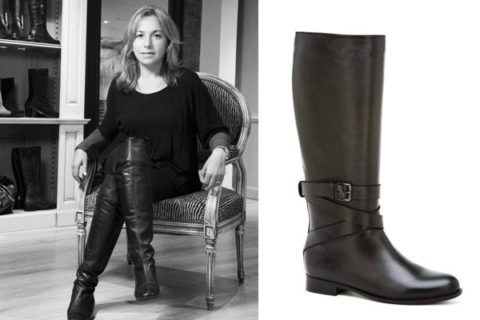
LA CANADIENNE
For Penny Shuster, 1990 was a major year. She fell in love twice: first with footwear and then with her future husband. The scene: Milan, where she studied at Ars Sutoria, the renowned shoe design school. She anticipated joining her family’s footwear company, La Canadienne, co-founded by her father, Michael Shuster, in 1975. Then Gianni Lamanuzzi, her design teacher’s best friend, swept her off her feet. It was a match made in shoe heaven. “My family was all about [footwear] and Gianni had always worked in shoe factories.”
They moved to Montreal, married and eventually took over the family business. Twenty years later, La Canadienne is a national success story with an international following: 70 per cent of its sales come from American retail behemoths like Bloomingdale’s and Neiman Marcus. Penny heads up the design team, website and the Montreal store, while her husband handles the behind-the-scenes work, such as managing the brand’s production and factory. She credits her father (“an amazing mentor”) for inspiring her strong work ethic. “It’s tricky working with family,” she admits. “But the major benefit is trust.”
Penny also trusts that certain La Canadienne signatures (their waterproof boot, their Montreal-based factory) will remain essential, but she’s determined to add a trendy bounce to the brand’s step. “We always look to the runways to incorporate new looks,” she says. “We want our customers to be able to live in fashion.”








